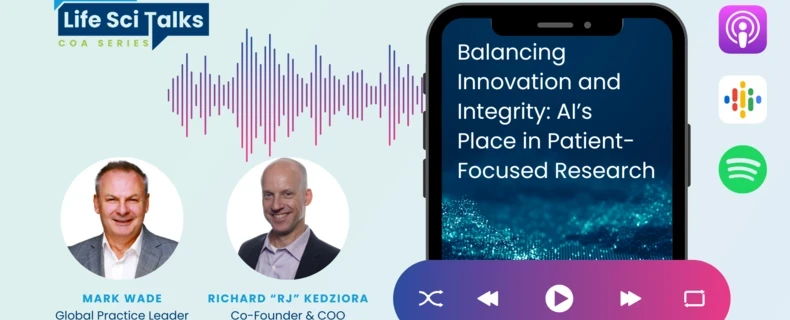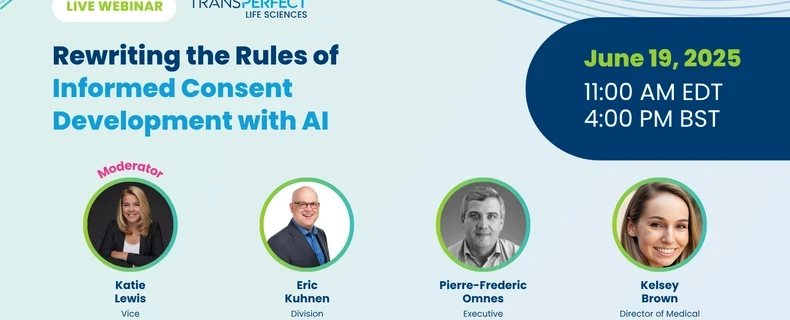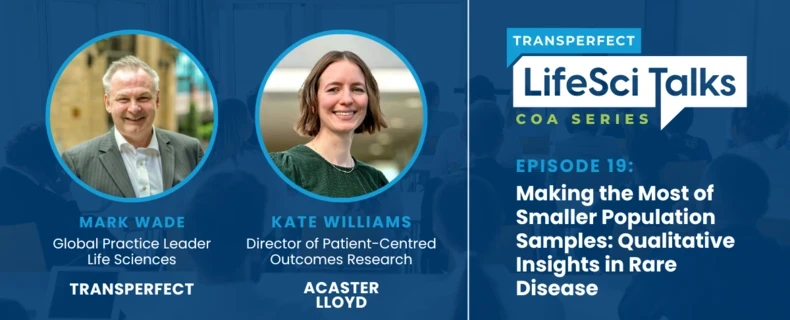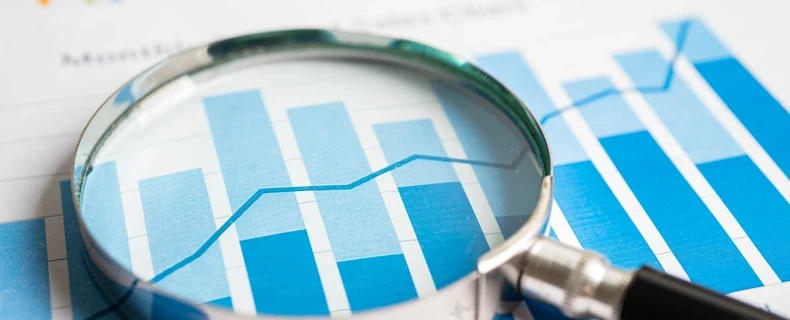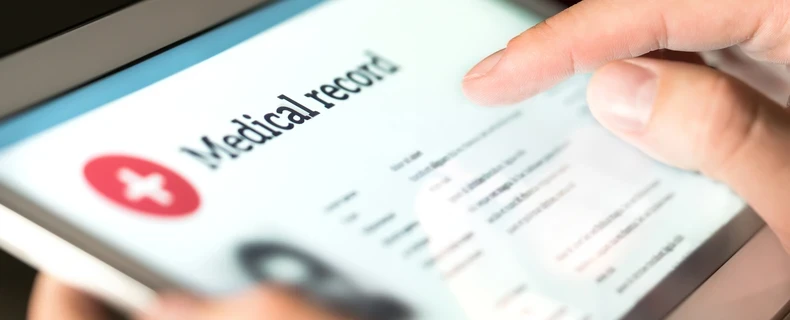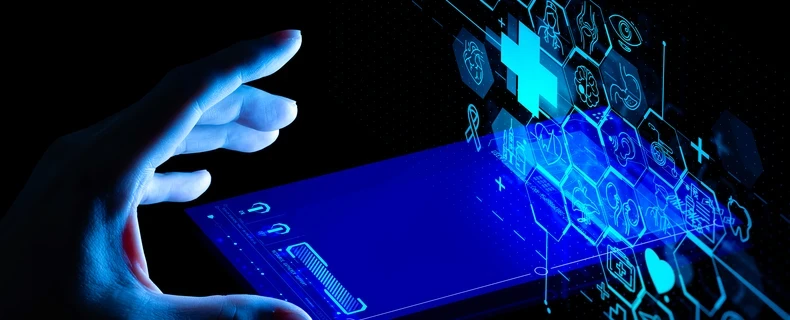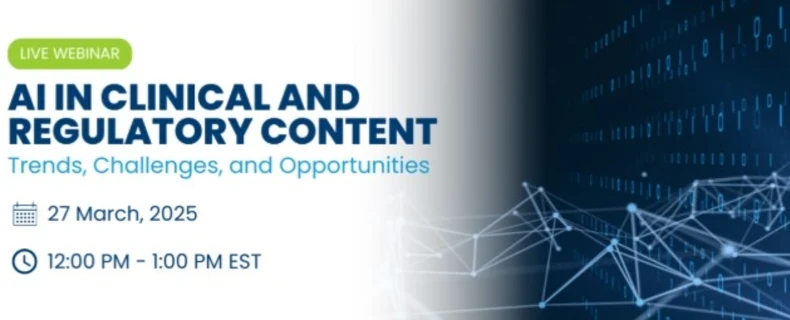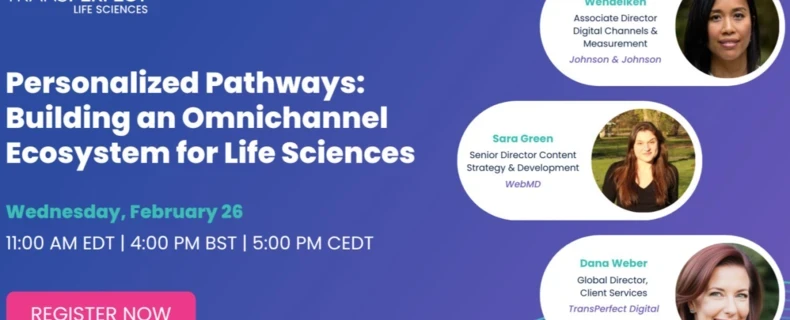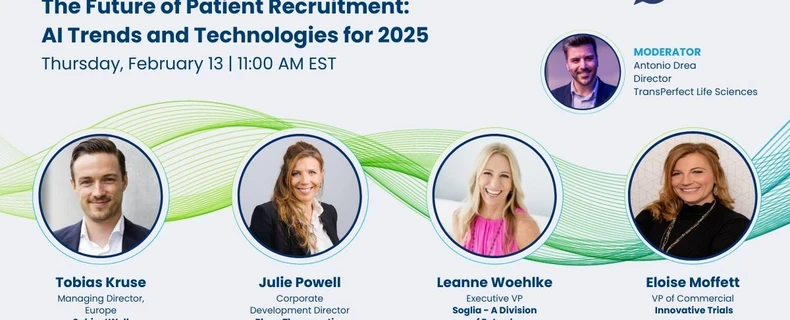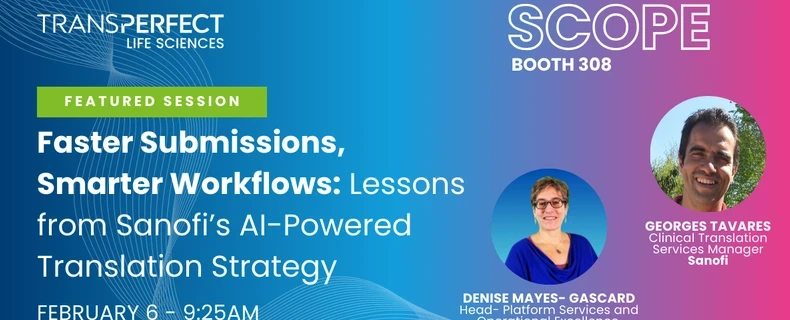Thought Leadership
Health Canada's Transition to XML: What Regulatory Teams Need to Know
Health Canada’s shift to XML Product Monographs starts July 2025. Learn what regulatory and compliance teams need to do now to stay aligned and submission-ready....
LifeSci Talks COA Series | Balancing Innovation and Integrity: AI’s Place in Patient-Focused Research
Artificial intelligence is redefining what’s possible across the clinical development lifecycle, but with rapid innovation comes the need for thoughtful oversight. In this episode of LifeSci Talks, Mark Wade, Global Practice Leader at TransPerfect Life Sciences, sits down with...
Web Localization Playbook for Life Sciences
The life sciences industry relies on websites to connect with patients, sites, and global audiences. Whether you're launching a patient recruitment campaign or managing an international healthcare marketing initiative, localization ensures your message is not just understood...
Rewriting the Rules of Informed Consent Development with AI
Regardless of the market a clinical trial is being conducted in, getting locally approved informed consent forms (ICFs) consume as much as 12% of a clinical trial budget before it even begins. Each ICF must be clear and delicately balance local regulations and patient...
OpTImize London
Park Plaza London Westminster Bridge 200 Westminster Bridge Road London, England, United Kingdom, SE17UT...
LifeSci Talks COA Series | Making the Most of Smaller Population Samples: Qualitative Insights in Rare Disease
In this episode of LifeSci Talks, Mark Wade, Global Practice Leader at TransPerfect Life Sciences, sits down with Dr. Kate Williams, Director of Patient-Centred Outcomes Research at Acaster Lloyd, to explore the nuances of gathering and applying qualitative data in rare disease...
AI in Clinical Outcome Assessment (COA): Challenges and Opportunities
In an increasingly interconnected and globalized world, effective cross-cultural communication is essential, making the development of accurate, efficient translation systems a top priority. ...
The Total Economic Impact of TransPerfect GlobalLink for Life Sciences
TransPerfect commissioned Forrester Consulting to conduct a Total Economic Impact™ (TEI) study and examine the return on investment (ROI) enterprises may realize by deploying GlobalLink. The objective of the framework is to identify the cost, benefit, flexibility, and risk...
RAPS Conference Takeaways
The Quick Conference Catch Up is a device industry reporting service from TransPerfect Medical Device. Based on live attendance at premier regulatory and strategy conferences, each Catch Up uses a conversational format to recap and highlight key conference takeaways. In these...
AI and MT for Medical Information Office Hours -4/30/2025
Welcome to TransPerfect Life Sciences' AI and MT Ask an Expert Office Hours. In these sessions, we provide an opportunity for our community to submit their pressing questions for our experts to answer live, in the company of your industry peers. If you are looking for some...
AI and MT for PV and Safety Office Hours - 4/23/25
Welcome to TransPerfect Life Sciences' AI and MT Ask an Expert Office Hours. In these sessions, we provide an opportunity for our community to submit their pressing questions for our experts to answer live, in the company of your industry peers. If you are looking for some...
Ask an Expert Office Hours: Website Localization for Patient Recruitment - 4/24/25
This session focuses on Website Localization for Patient Recruitment. Tackle your toughest patient recruitment and engagement challenges with free, no-strings-attached advice from TransPerfect's web localization and AI experts—no cost, no sales pitch, just solutions!...
Digital Health Global Expansion Roadmap
For digital health companies—whether startups or tech giants—successfully launching new digital health apps starts with user adoption. To ensure long-term sustainability, these apps must attract, engage, and retain a diverse user base, which means they need to be culturally and...
Smith & Nephew Saves $200k Annually While Meeting MDR & IVDR Stringent Vigilance Requirements
Part of TransPerfect's GlobalLink suite of productivity applications, GlobalLink Now is a simple, but powerful way to access secure, customized AI. The system has an intuitive UI for sign on and engagement, making the application easy to use and adopt. ...
AI in Clinical and Regulatory Content: Trends, Challenges, and Opportunities
During this webinar, we will unveil the results of our industry survey on the role of Artificial Intelligence (AI) in clinical and regulatory content. This session will explore how AI is being evaluated and applied to search, analyze, and generate clinical and regulatory content,...
Avoiding Risk in Multilingual eCOA: FDA, EMA, and ISPOR Standards
Regulatory agencies worldwide, including the FDA, EMA, and other health authorities, require eCOA translations to be accurate, validated, and culturally adapted. ...
Driving Commercial Success in Life Sciences with GenAI for Scalable Impact
Life sciences organizations are turning to AI/ML to enhance operational efficiency, with GenAI taking center stage as a game-changer for commercial teams. Beyond process optimization, AI is accelerating the adoption of omnichannel strategies by enabling and improving precise,...
Personalized Pathways: Building an Omnichannel Ecosystem for Life Sciences
In an increasingly globalized digital landscape, the demand for personalized content has never been greater. Listen as Joy Wendelken from Johnson & Johnson alongside Sara Green of WebMD Ignite in conversation with Dana Weber from TransPerfect Digital discuss how omnichannel...
LifeSci Talks COA Series | Data Without Interpretation is Meaningless: Unlocking Inherent Value Within the Numbers
In this episode of LifeSci Talks, Mark Wade, Global Practice Leader at TransPerfect Life Sciences, sits down with Elizabeth (Nicki) Bush, Executive Director and Global Head of Endpoint Strategy and COA Measurement at OPEN Health Group to discuss the growing complexity of...
E-Learning in Pharma: Creating & Managing Global Training Programs
Learn how pharmaceutical companies can streamline global training programs through customizable, compliant, and engaging e-learning solutions....
The Future of Patient Recruitment: AI Trends and Technologies for 2025
As artificial intelligence continues to change the way pharma companies engage with patients globally, a critical question emerges: how do we ensure patients remain at the heart of clinical research? In this webinar with Innovative Trials, SOGLIA, Subjectwell, and Pleco...
Faster Submissions, Smarter Workflows: Lessons from Sanofi's AI-Powered Translation Strategy
In this session, learn how Sanofi has transformed its translation processes using centralized management by expert project managers, automated workflows, and integration of TransPerfect’s GlobalLink platform with Veeva eTMF. You’ll gain insights into Sanofi’s pragmatic, phased...


